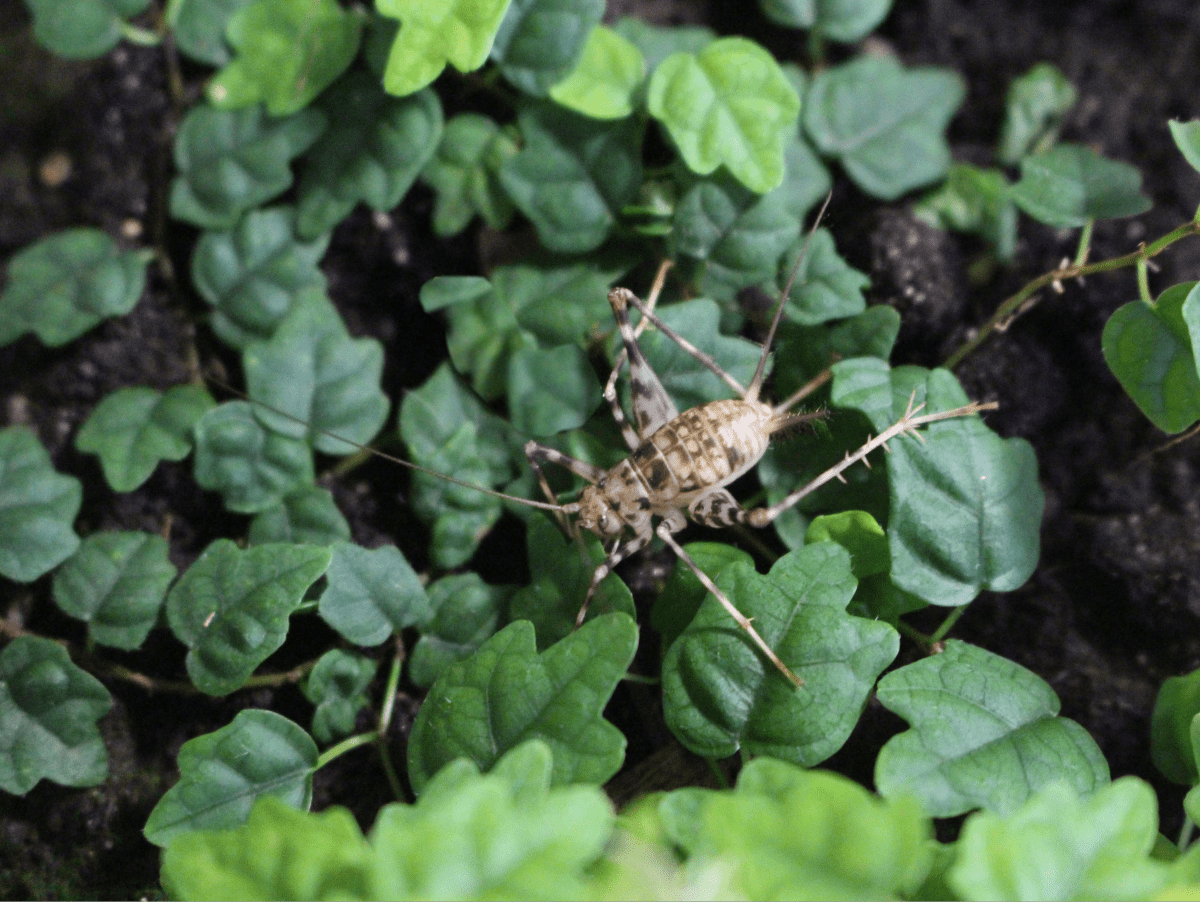General:
In nature, the cave crickets live in Zambia, in the cave of Chibongwe. They were discovered in 1968 and were originally called Pholeogryllus geertsi. After they had been extensively studied and bred for several years in the “Natural History Museum Vienna”, Pholeogryllus geertsi was renamed Phaeophilacris bredoides.
The cave cricket (Phaeophilacris bredoides) – is for me one of the most extraordinary crickets in the world. Its appearance is so unique that at first sight you don’t think it is a cricket, but a kind of spider. Their antennas and legs are extremely long, the cercus at the end of the abdomen is also elongated. The general colour of cave crickets is yellowish-grey, the legs are covered with small dark spots. The length of the body is 1.5 – 2 cm, the females are slightly larger than the males. Both sexes have no hearing organs. Female cave crickets are completely wingless and have a long needle-shaped ovipositor (spines). The males also lack the lower pair of wings. In contrast to other cricket species, the upper pair of wings of males has a smooth surface. This means that the male cave crickets cannot chirp, which makes them a pleasant food insect that can be bred silently indoors.
See how to properly unbox East African cave crickets!
Breeding:
At the moment I still use a BraPlast box with 5.8 litres capacity for breeding, but I notice already at the beginning that a min. double size of the breeding box would be more reasonable. A sufficient ventilation can be achieved by attaching a generous gauze surface to the lid. This should be drosophila-proof, because otherwise fruit flies will be in the breeding base and the freshly hatched cave crickets, which are very small, will escape. The cave crickets like to climb along the gauze at night, thus additionally increasing the running surface of the container.
As hiding place I use cardboard rolls in which they like to stay during the day. Later I will also try upside down flower pots and see what they accept better. Clay pots for the reason that the clay can soak up water and thus increase the humidity in the growing container. This is still pure theory.
At the moment I heat the breeding container on the side with a heating mat, so that there are different temperatures in the container. At the moment they prefer to stay in the range of 28°C. The air humidity is between 50-75%. I have created a more humid zone in the container by using an egg deposit box, but this is rarely visited. They prefer to stay at 60% humidity. I reach this value by spraying lightly every 2 days into the egg deposit box and once briefly on the cardboard rolls. Since Phaeophilacris bredoides live in caves in nature and are also nocturnal, additional lighting for the animals is not necessary. In nature crickets only come to light for mating. This is not a prerequisite for the mating act itself.
So far they have eaten everything I have offered them to eat. Oatmeal, bran, fish flake food, chick starter, dry food for cats and dogs (increases the need for liquid), carrots, cucumber, apples and dandelion leaves.
I proceed with feeding as with all my food animals and feed them every 2-3 days and then only so much that within 2-3 days everything is eaten. Leftover food must be removed after this period at the latest. I observe again and again how the animals suck up the water splashes after I have sprayed the egg-laying box. Therefore I will put a bird watering place in the box to see if they will accept it. There too I proceed as usual and put a cotton pad in the exit area to protect the smaller animals from drowning.
Adult males are territorial and try to drive away the other male rival. In a collision they waggle their wings and drum with their front legs and sometimes even bite. Such skirmishes are harmless, however, and rarely lead to mutilation of the rival.
Before mating, the male cave cricket performs a mating ritual. It touches the female with its antennae and moves its wings in a rhythm.
The females lay the eggs exclusively in a moist loose soil. For this purpose, a small container with a depth of at least 3 – 4 cm filled with moist peat or coconut soil must be provided. The female scans the soil substrate with her ovipositor in search of a suitable place and lays 1 to 5 eggs in one place. The female can lay several hundred eggs in her lifetime, so there is sufficient offspring.
The substrate with the eggs should be moistened regularly to prevent the eggs from drying out. About 4-8 weeks after laying the eggs, depending on the temperature, tiny crickets appear from the eggs. I will determine the exact incubation periods depending on the temperature. The sex of the crickets can only be recognized by the spines of the eggs. At room temperature the larvae develop into adults in about ten months, at 28°C about 6 months. After that the animals live for about 6 months. Larvae of all sizes and imagines are compatible with each other and can therefore be kept together. This species also tolerates a surprisingly high population density.



